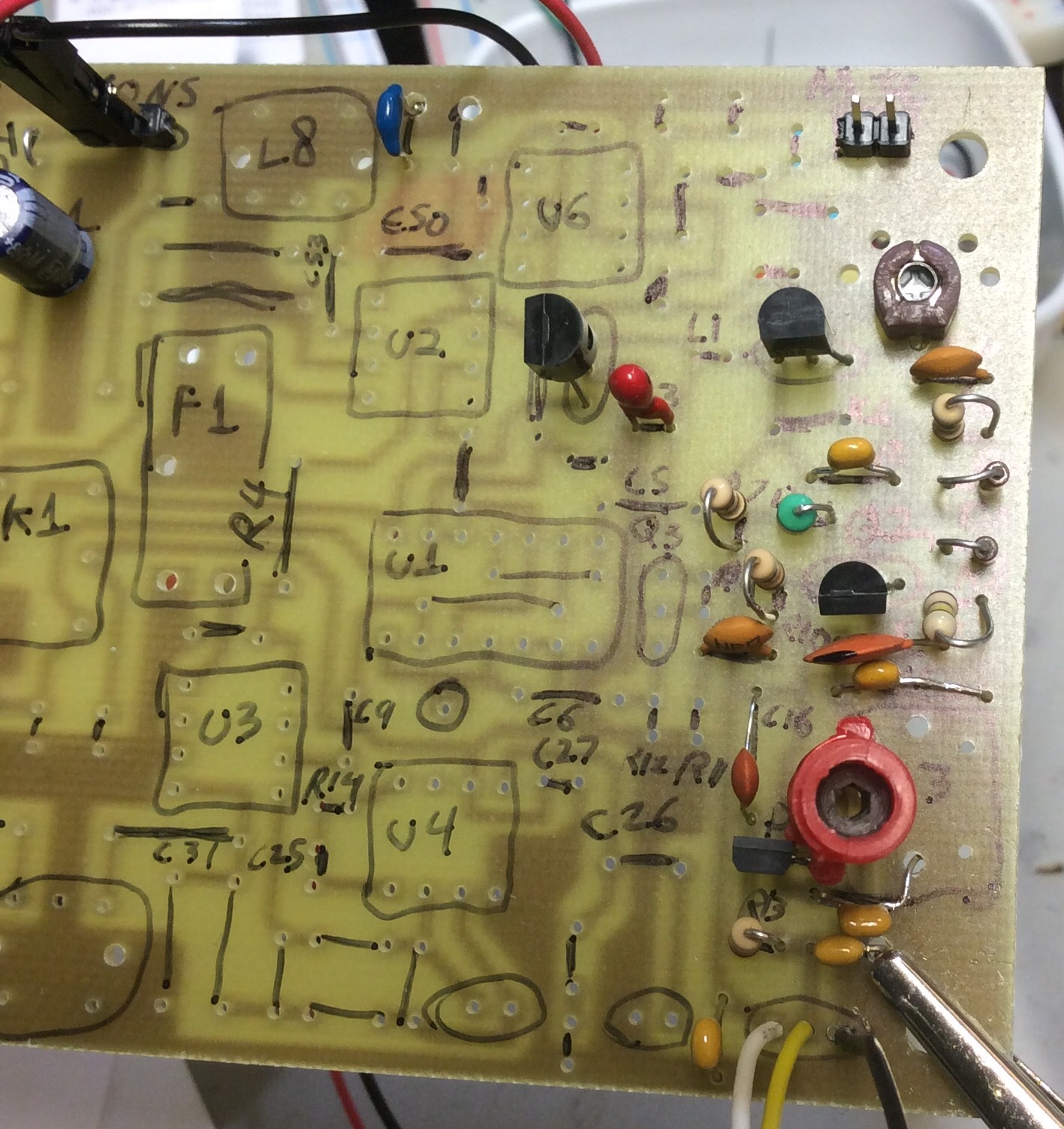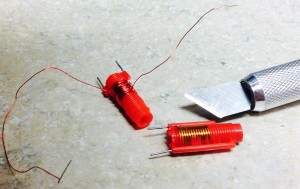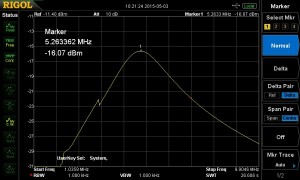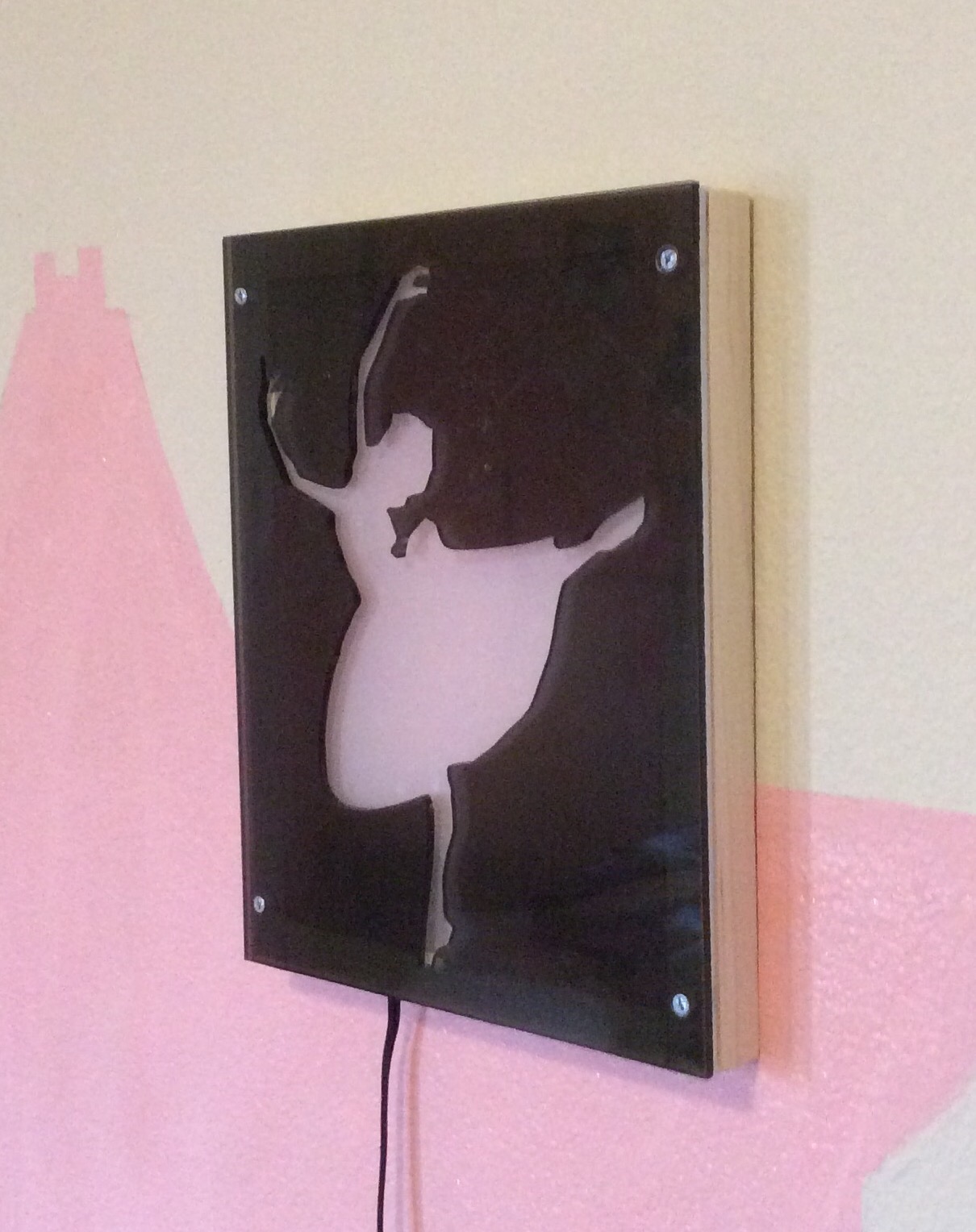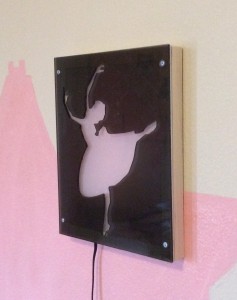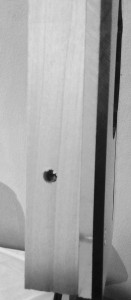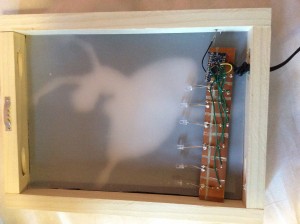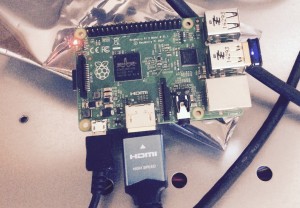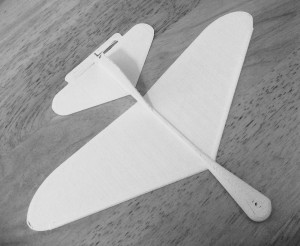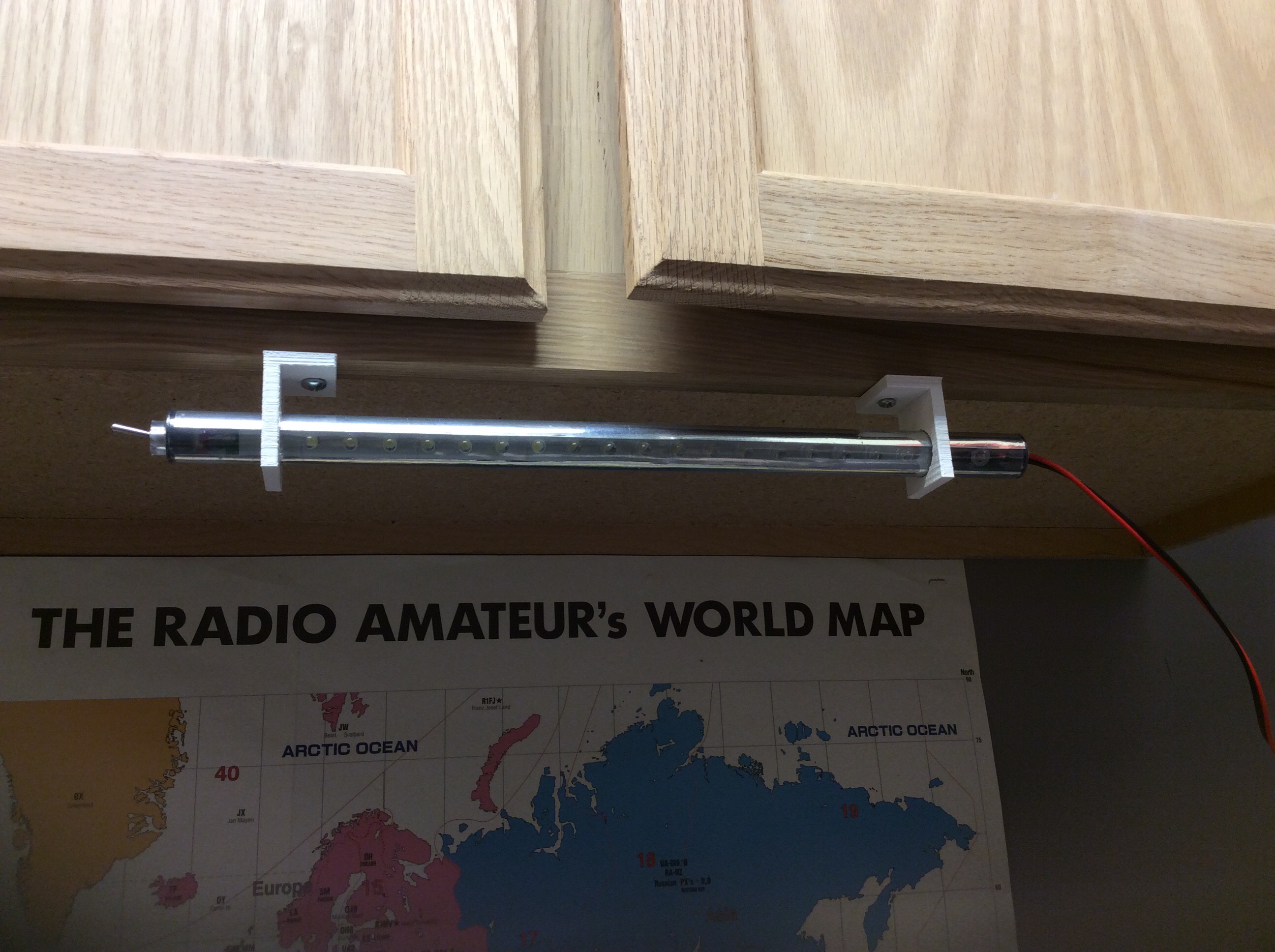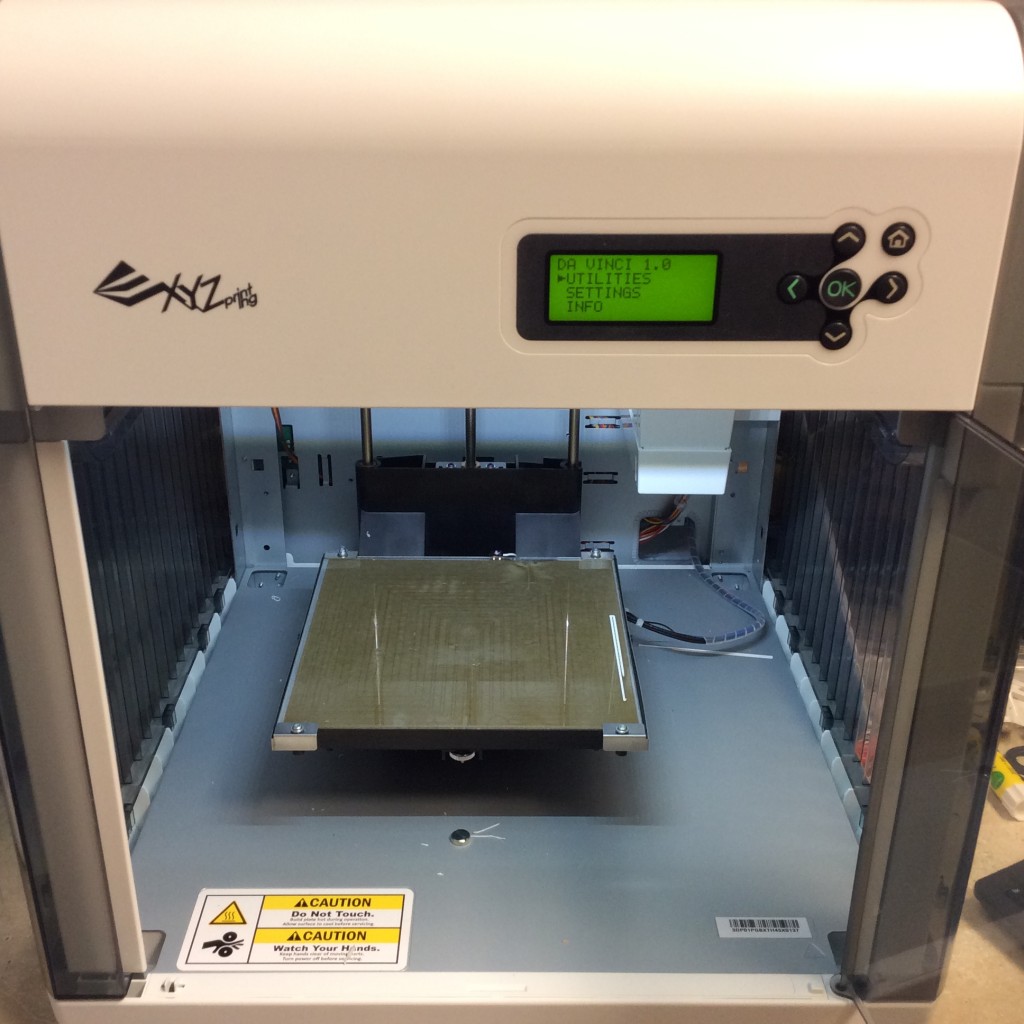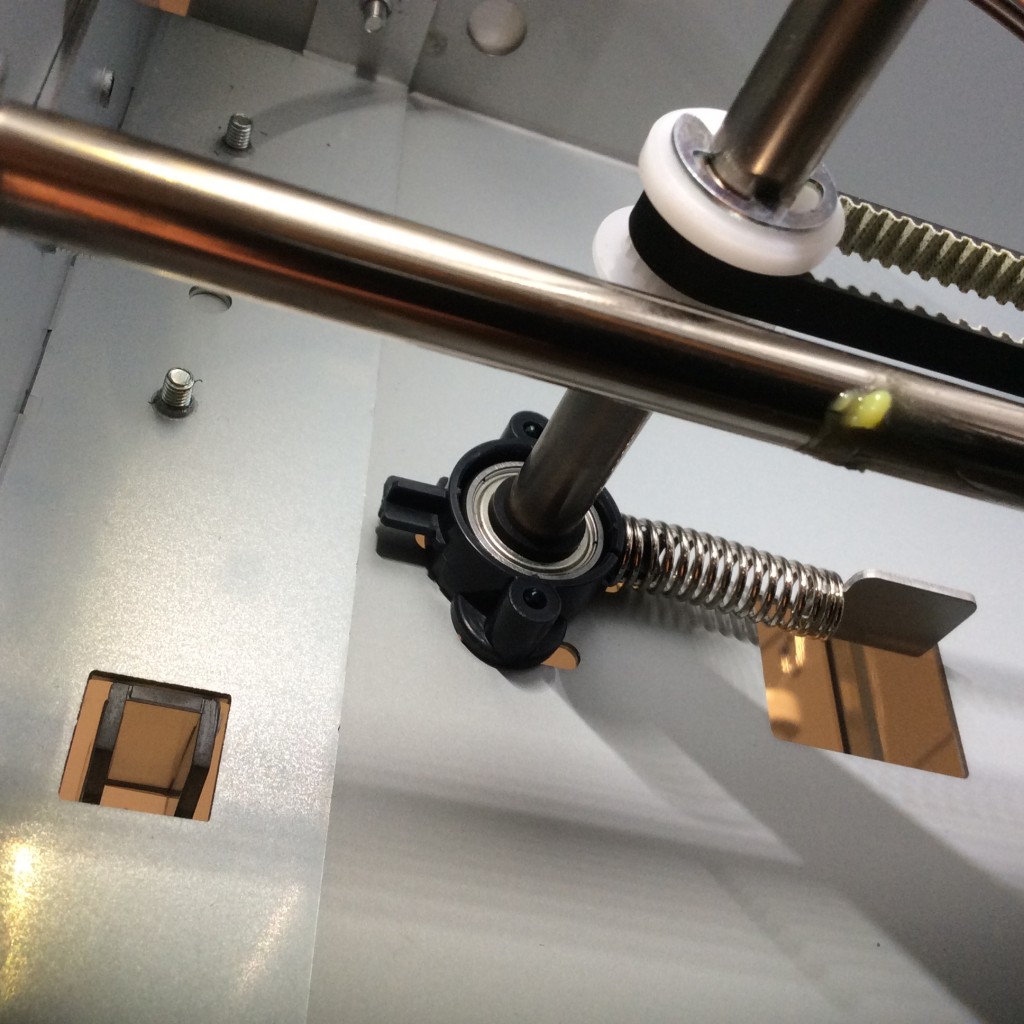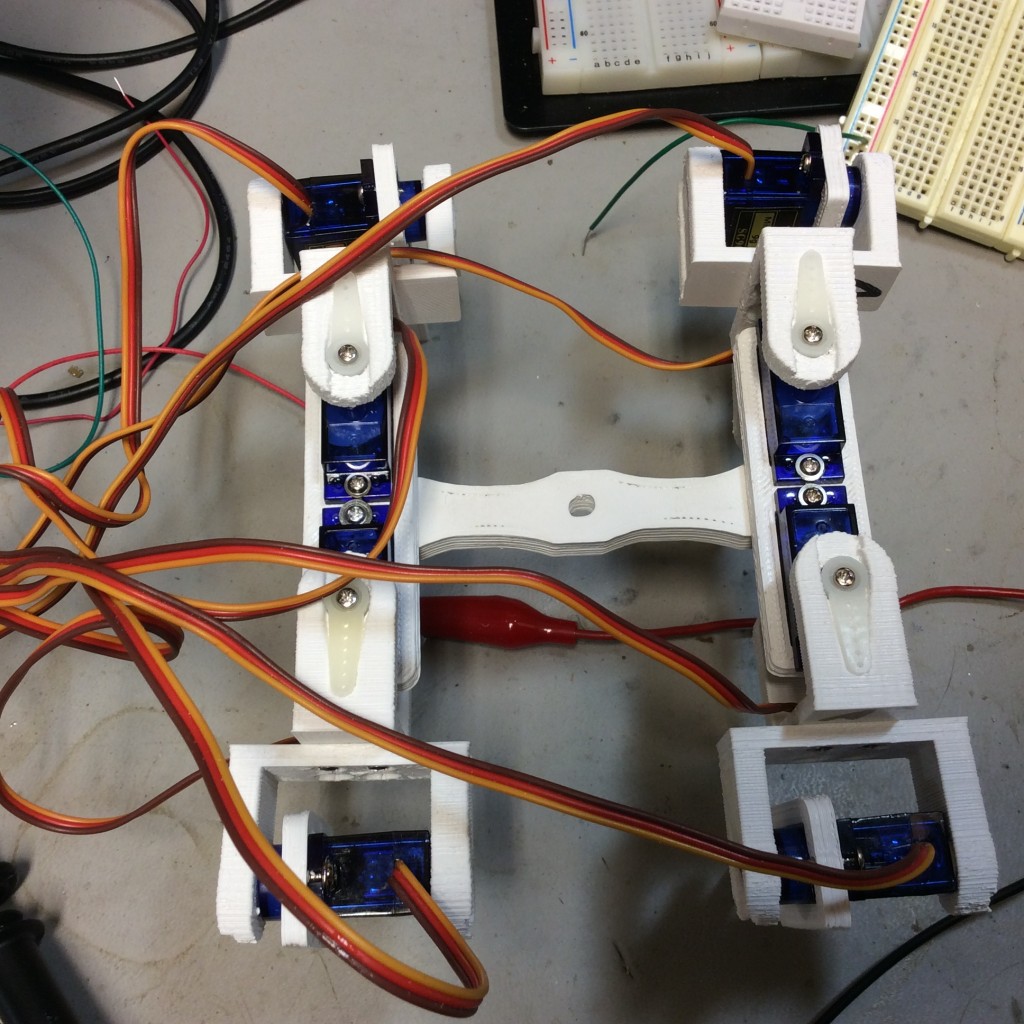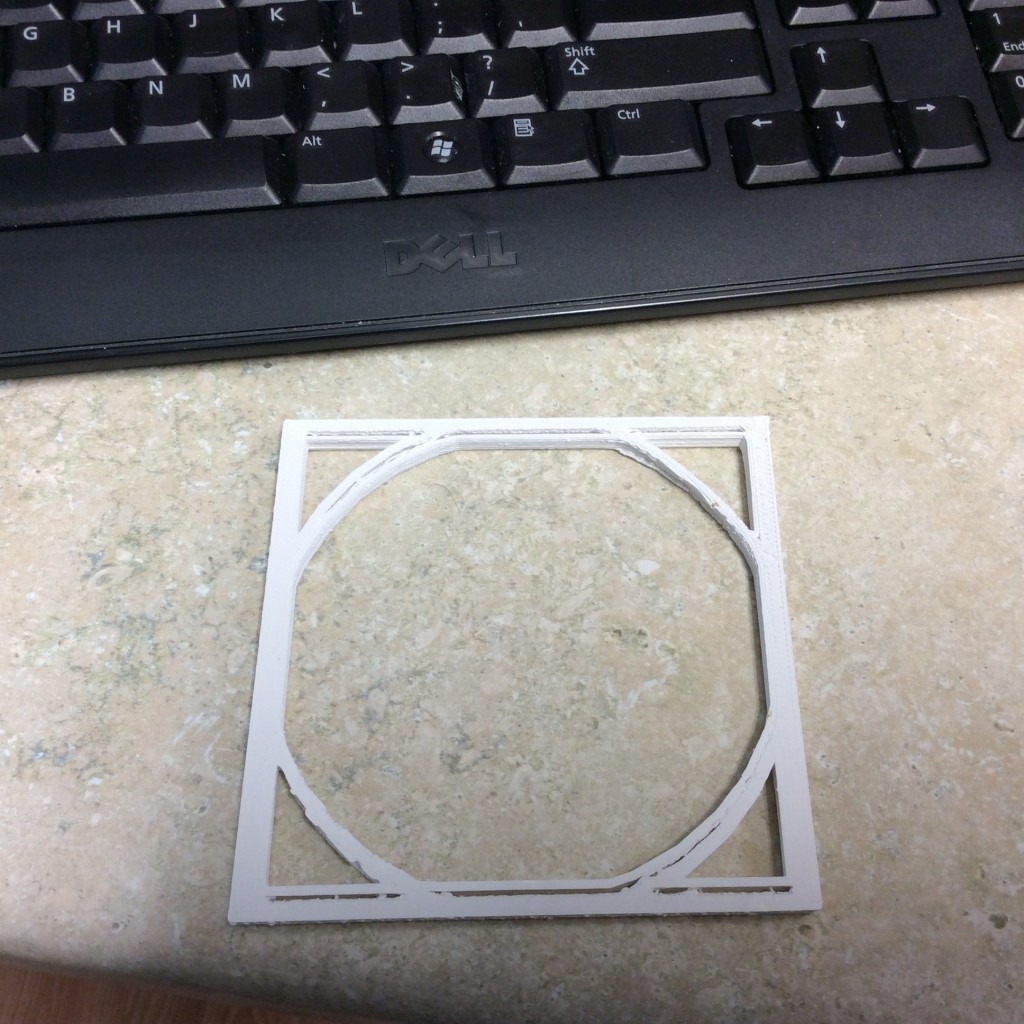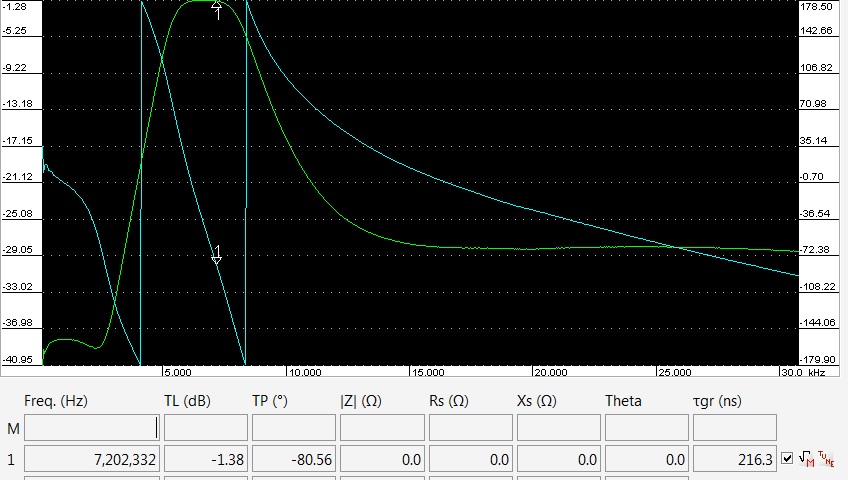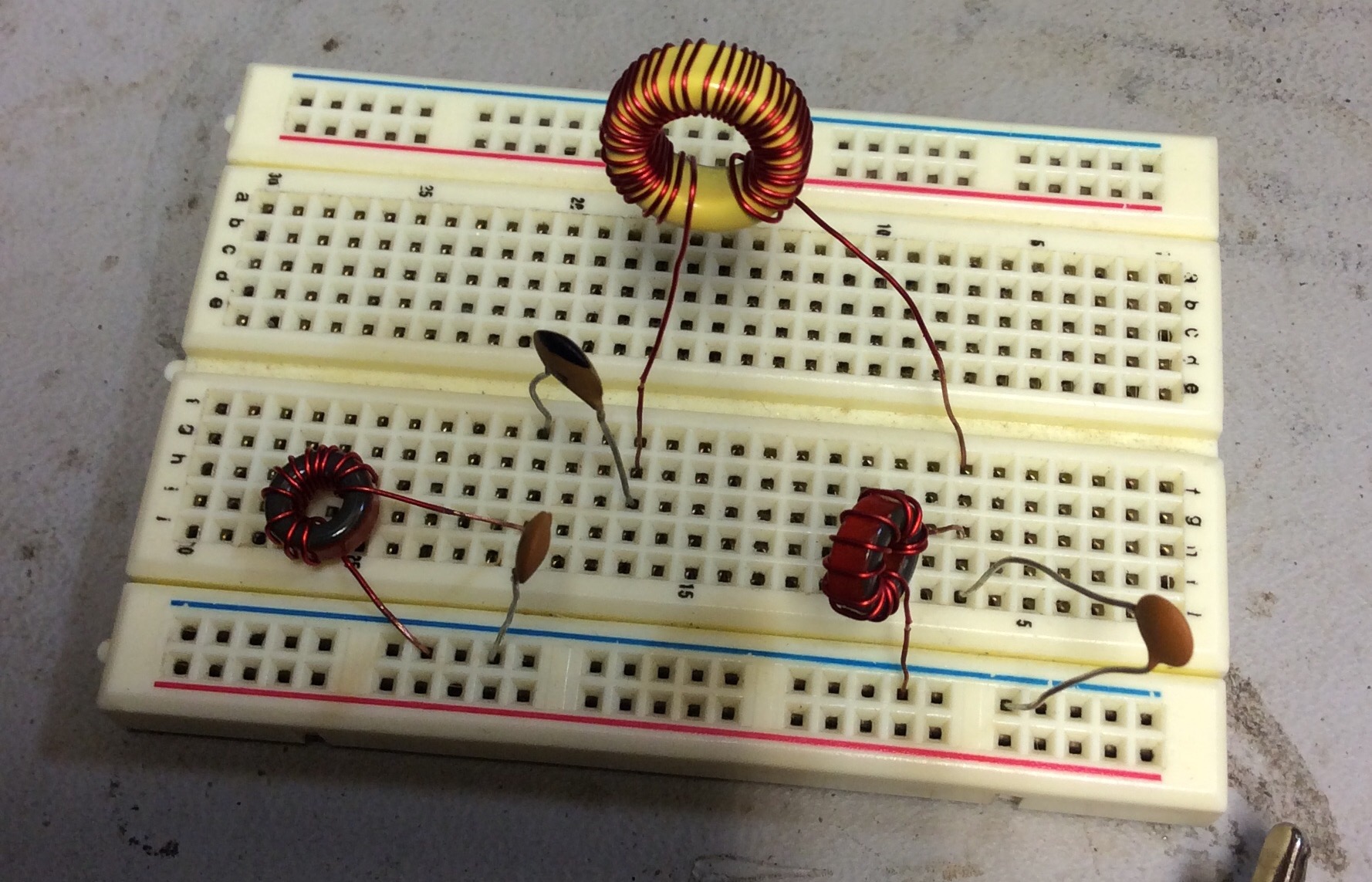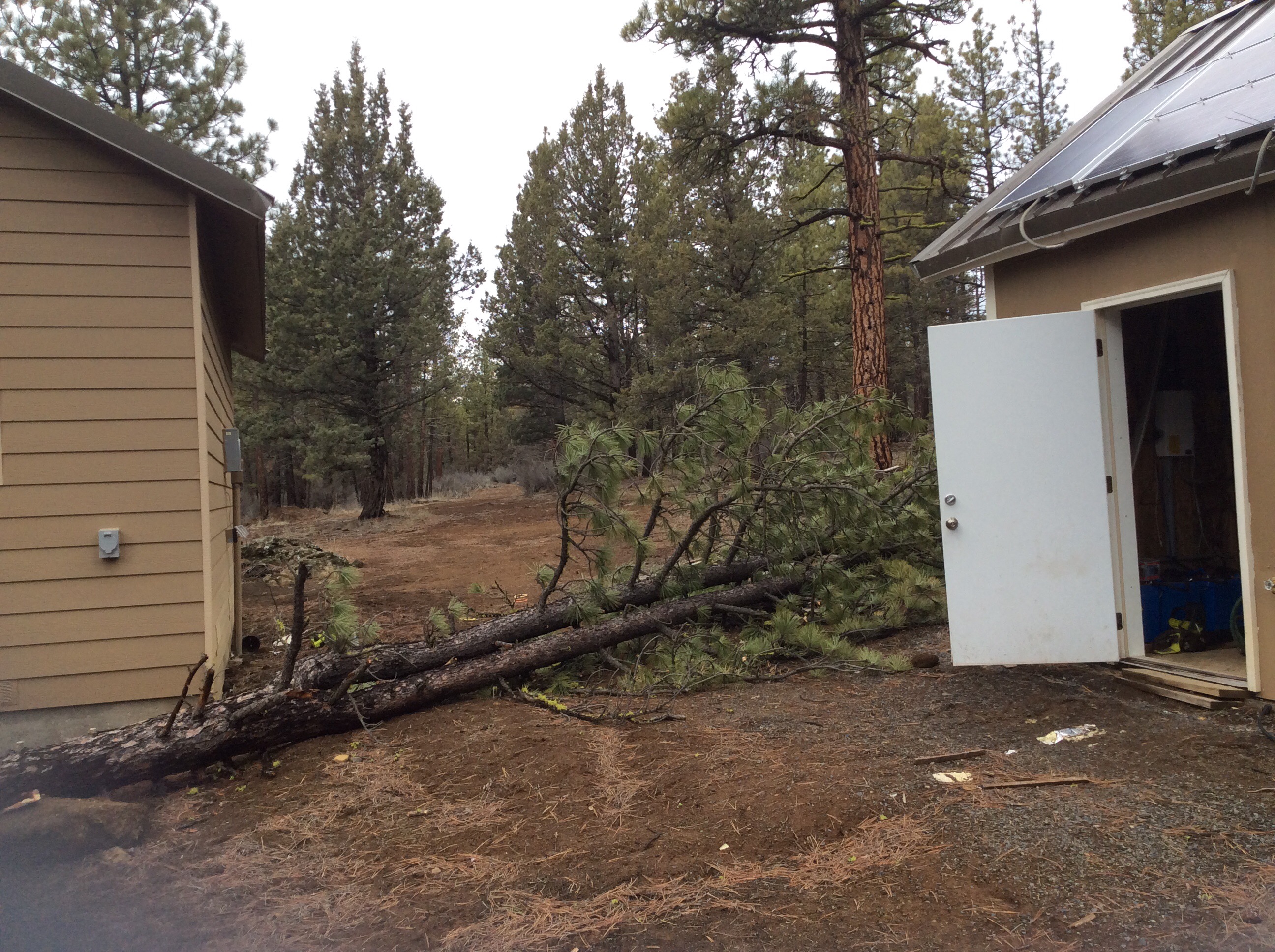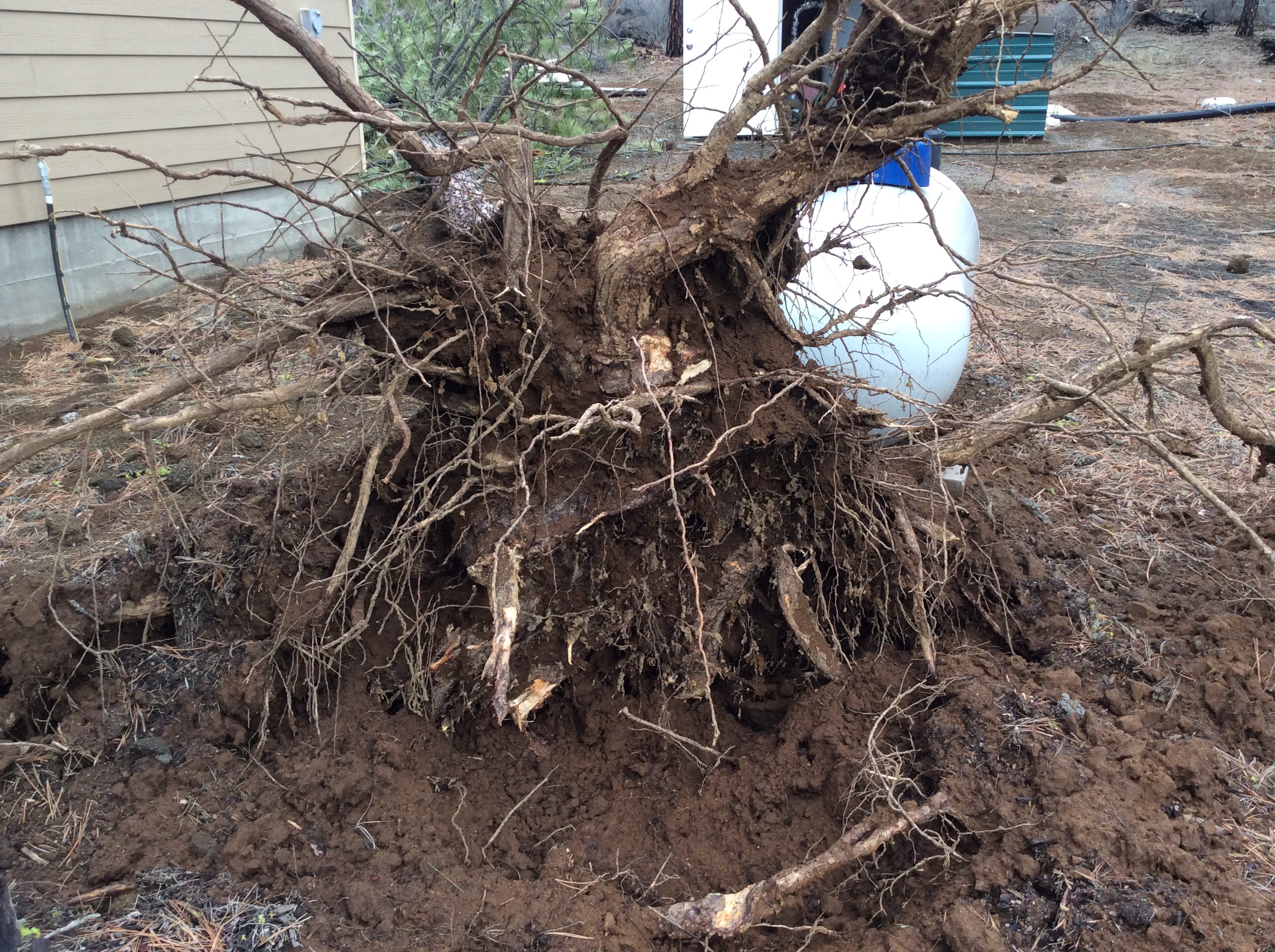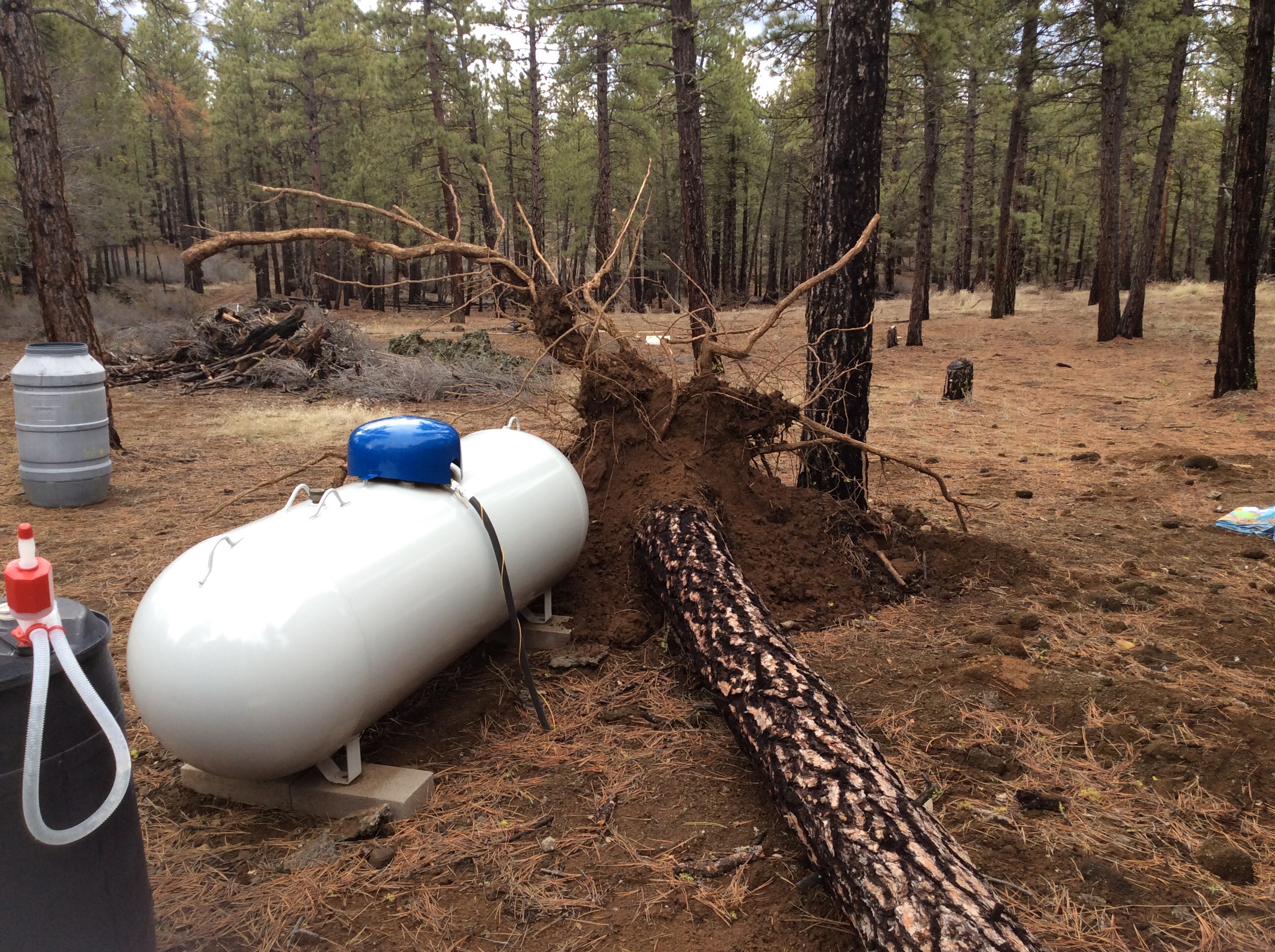I’ve been thinking of buying a KD1JV 75m “Survivor” ssb radio kit. I came across the precursor to the Survivor, the Epiphyte. Derry Spittle VE7QK, now a SK originally designed the Epiphyte in the early 1990’s. The Epiphyte uses several now obsolete parts to reduce total parts count. Most notably a CA3020A and a Murata M455J1 ssb bandwidth filter. I’ve sourced the CA3020A cheaply from China. The M455J1 is harder to find. Occasionally, you see some on ebay for about USD$60. I purchased a PCB from Far Electronics for USD$10.
I’ve got the VFO section working. I substituted a VHF inductor that I rewound with 20 turns of 26AWG to get about 1.7uH. The MVAM108 can still be purchased easily from any store that sells NTE replacements. Look for NTE618. I found mine at Fry’s.

